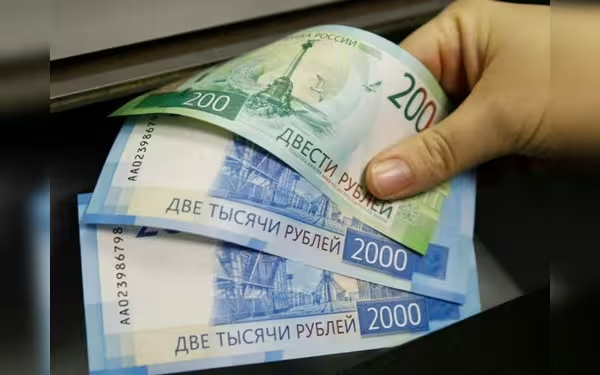Saturday, November 16, 2024 08:50 PM
Russian Rouble Weakens Against Chinese Yuan Ahead of OFAC License Expiry
- Rouble declines 2.8% against yuan amid license expiration concerns.
- Chinese yuan becomes Russia's most traded foreign currency.
- Market uncertainty impacts rouble's stability and trading dynamics.
 Image Credits: brecorder
Image Credits: brecorderThe Russian rouble weakens against the Chinese yuan due to OFAC license expiry concerns, impacting currency trading dynamics.
The Russian rouble has recently shown signs of weakness against the Chinese yuan, primarily due to looming concerns surrounding the expiration of a crucial license from the U.S. Treasury Department’s Office of Foreign Assets Control (OFAC). This license, which is set to expire on October 12, was initially granted to facilitate the winding down of operations by commercial banks with the Moscow Stock Exchange (MOEX). This situation arises in the wake of Western sanctions imposed on the exchange and its clearing agent, the National Clearing Centre, back in June.
These sanctions have significantly altered the trading landscape, halting all transactions in dollars and euros at MOEX. As a result, the Chinese yuan has emerged as the most traded foreign currency in Russia. The shift in currency trading has led to a transition towards the over-the-counter (OTC) market, which has made it challenging to obtain clear price data. Market participants are now expressing concerns that, following the expiration of the OFAC license, Chinese banks that provide yuan liquidity for exchange trading may withdraw their support due to compliance issues.
As of 08:00 GMT, the rouble was trading at 13.51 against the yuan, reflecting a 2.8% decline from the closing level on September 30, which was the last trading day before the Chinese National Day holiday. Additionally, the rouble was down 0.3% from Monday’s closing, trading at 13.57 against the yuan on MOEX. Meanwhile, the rouble remained stable at 96.15 against the dollar, according to LSEG data. Notably, the rouble has depreciated by approximately 10% against the yuan in September, marking its lowest level since October 2023.
Traders and analysts have pointed to the uncertainty surrounding the license expiration and the low sales of foreign currency by the state as significant factors contributing to this decline. One-day rouble-dollar futures, which serve as a guide for OTC market rates, remained flat at 96.17. The central bank’s official exchange rate, calculated using OTC data, was set at 96.06 to the dollar. Furthermore, the rouble was down 0.12% at 105.70 against the euro, as per LSEG data.
In the broader context, Brent crude oil, a key benchmark for Russia’s main export, saw a decrease of 2.0%, trading at $79.54, as traders took profits following a rally in the previous session. This fluctuation in oil prices further complicates the economic landscape for Russia, which heavily relies on oil exports.
The current situation surrounding the Russian rouble and its relationship with the Chinese yuan highlights the intricate dynamics of international finance and trade. As the expiration of the OFAC license approaches, market participants will be closely monitoring developments, as these could have significant implications for currency stability and trade relations. Understanding these factors is crucial for anyone interested in the global economic landscape, as they underscore the interconnectedness of financial markets and the impact of geopolitical events on currency values.













